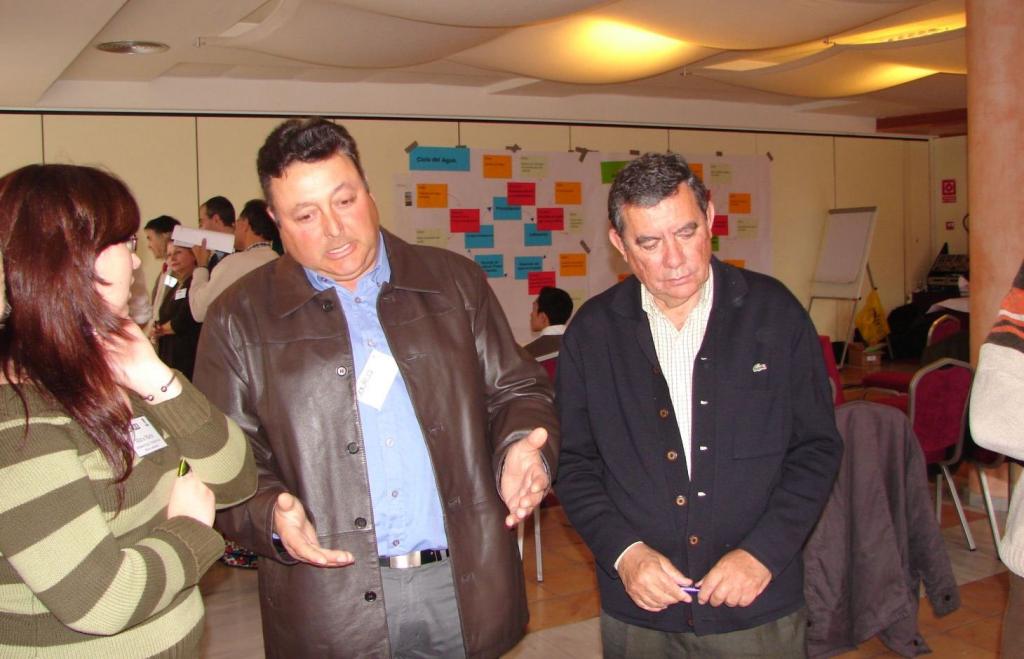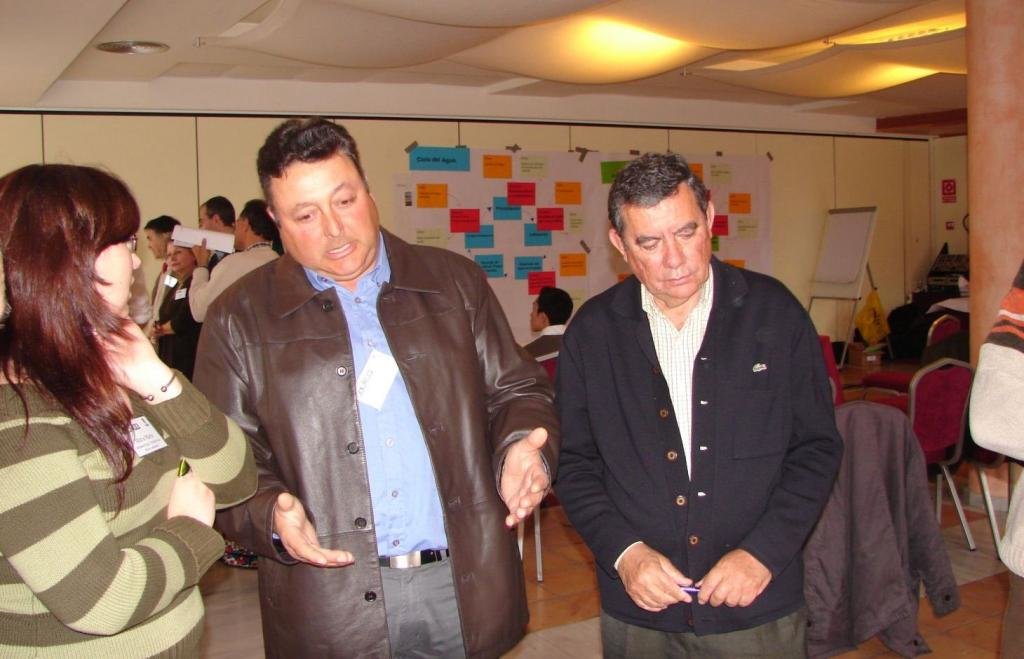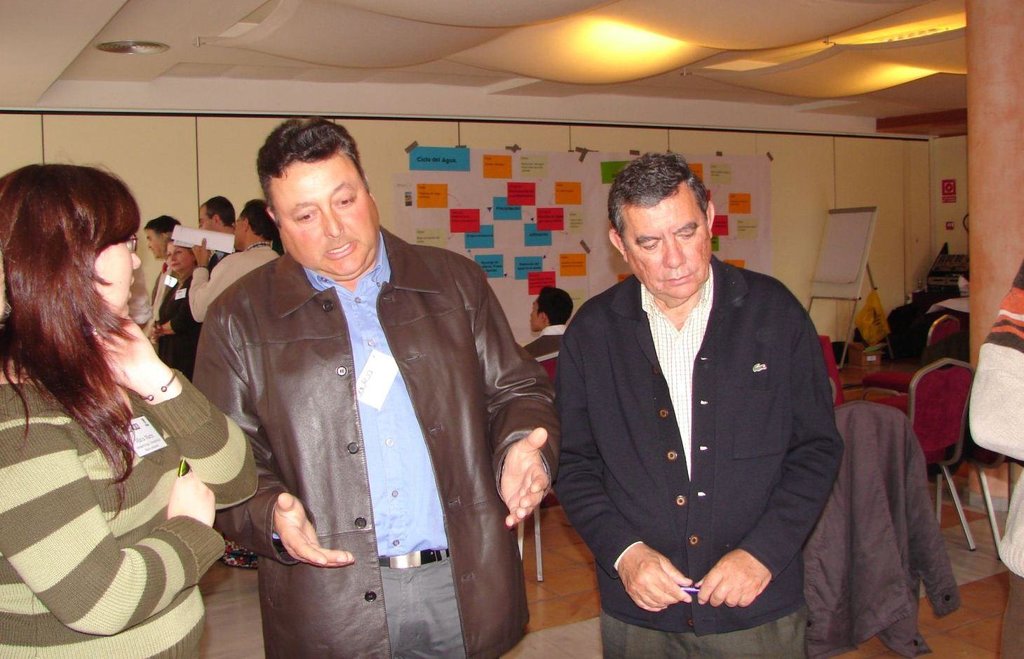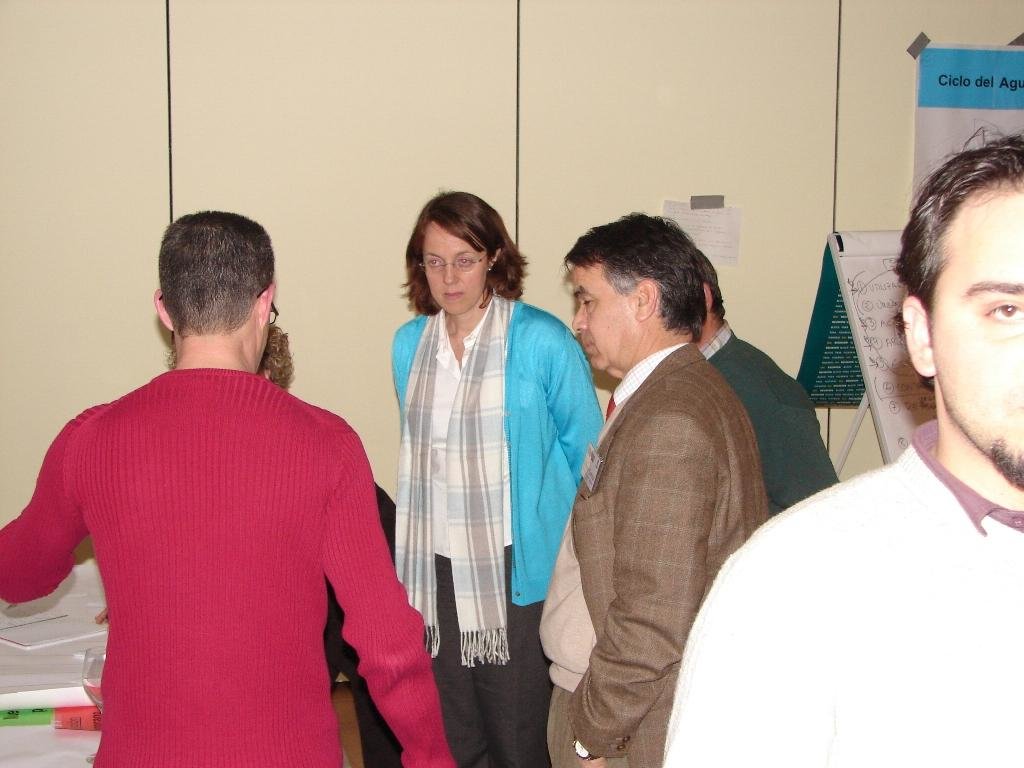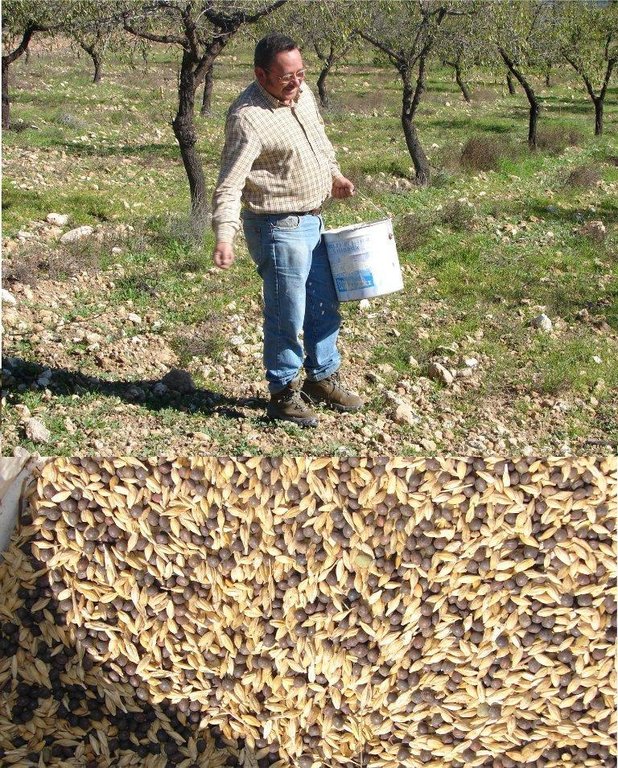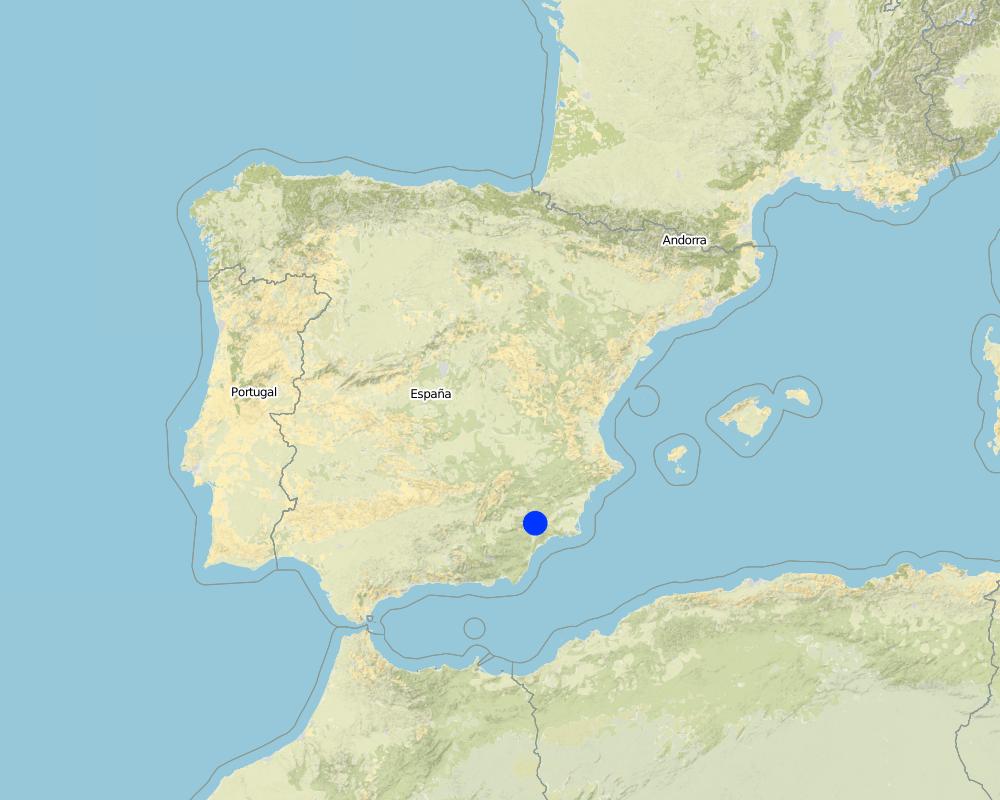Regional rural development programme [Spain]
- Creation:
- Update:
- Compiler: Joris De Vente
- Editor: –
- Reviewer: David Streiff
Programa de desarrollo rural de la región de Murcia (Spanish)
approaches_2419 - Spain
View sections
Expand all Collapse all1. General information
1.2 Contact details of resource persons and institutions involved in the assessment and documentation of the Approach
SLM specialist:
Name of the institution(s) which facilitated the documentation/ evaluation of the Approach (if relevant)
EEZA-CSIC (EEZA-CSIC) - Spain1.3 Conditions regarding the use of data documented through WOCAT
The compiler and key resource person(s) accept the conditions regarding the use of data documented through WOCAT:
Yes
1.4 Reference(s) to Questionnaire(s) on SLM Technologies
2. Description of the SLM Approach
2.1 Short description of the Approach
Regional development programme to protect natural resources and stimulate rural economies.
2.2 Detailed description of the Approach
Detailed description of the Approach:
Aims / objectives: The objective of the Rural Development Programme (RDP) is to assist farmers who have to deal with difficult environmental conditions (drought, steep slopes) to apply sustainable farming practices either in the implementation phase or for maintenance. The programme is carried out to: 1) improve the socio-economic conditions of rural areas; 2) prevent land abandonment, and 3) prevent on-site and off-site damages caused by land degradation and erosion. To achieve these objectives, the RDP identifies different lines of action: 1) compensate for difficult natural conditions; 2) fight against erosion; 3) reduce farming intensity; and 4) promote ecological agriculture.
Methods: The main method used in the RDP is through subsidies of farming practices following a cross-compliance principle. Each line of action implies a combination of conservation measures that are subsidised, but only when applied in combination. Hence, single conservation measures outside of these lines of action are not subsidies.
Role of stakeholders: The level of the subsidy is based on estimated implementation and maintenance costs and possible loss of productivity caused by the conservation measures. These values were obtained after consultation of various stakeholder groups including farmer organisations with agricultural cooperatives. However, because of limited resources, not all farmers will receive subsidies for the conservation measures. Priority is given to: 1) farmers who have 50% of their land within the Nature 2000 network, a European wide network of protected areas for the preservation of habitats and threatened species; 2) farmers with >50% of their land in unfavourable zones; and 3) farmers who did not receive subsidy in previous RDPs.
Other important information: Furthermore, areas with slopes of more than 20% are not subsidised in this programme since it is recommended that no agriculture takes place in these areas. Instead, reforestation of these areas is subsidised. RDPs are developed for a period of 7 years. Every seven years, a new RDP is defined and priorities and levels of subsidies can change. The present RDP is valid for the period 2007-2013.
2.3 Photos of the Approach
2.5 Country/ region/ locations where the Approach has been applied
Country:
Spain
Region/ State/ Province:
Murcia
Further specification of location:
Guadalentín basin, Spain
Map
×2.6 Dates of initiation and termination of the Approach
Indicate year of initiation:
2007
2.7 Type of Approach
- project/ programme based
2.8 Main aims/ objectives of the Approach
The Approach focused mainly on SLM with other activities (Socio-economic development of rural areas)
1) improve the socio-economic situation of rural areas; 2) prevent land abandonment; and 3) prevent on-site and off-site damage caused by land degradation and erosion.
The SLM Approach addressed the following problems: The main problems addressed by the approach are low income and low productivity of farmers in rural areas, subsequent land abandonment, and erosion and land degradation processes causing on-site and off-site damage.
2.9 Conditions enabling or hindering implementation of the Technology/ Technologies applied under the Approach
social/ cultural/ religious norms and values
- hindering
The problem is not always recognised by everyone and certain practices are cultural.
Treatment through the SLM Approach: Information and training by the regional extension services and the agricultural organisations.
availability/ access to financial resources and services
- hindering
Many technologies require an investment and maintenance, or even reduce productivity because they occupy land
Treatment through the SLM Approach: A subsidy equal to the loss of productivity and implementation and maintenance costs.
knowledge about SLM, access to technical support
- hindering
Some technologies require establishment of vegetation cover, which is difficult under arid conditions.
Treatment through the SLM Approach: Advice about which vegetation types to use and subsidy to cover the implementation costs.
3. Participation and roles of stakeholders involved
3.1 Stakeholders involved in the Approach and their roles
- local land users/ local communities
Farmer organisations (agricultural cooperatives)
Traditionally land users and agricultural activities are dominated by men
The focus of the approach is on the socioeconomic situation of farmers with a relatively low income and under marginal conditions.
- SLM specialists/ agricultural advisers
Research institutes
- local government
regional ministry of agriculture
- national government (planners, decision-makers)
Part of the subsidies are paid directly by the national government
- international organization
Part of the subsidies are paid through the EU feader programm
3.2 Involvement of local land users/ local communities in the different phases of the Approach
| Involvement of local land users/ local communities | Specify who was involved and describe activities | |
|---|---|---|
| initiation/ motivation | self-mobilization | Petitions towards policy makers and farmers organizations to pay attention for production under difficult environmental conditions |
| planning | interactive | Land users were sporadically consulted through farmers organizations and participated in protest meetings against initial versions of the RDP that they considered insufficient regarding payments for the agricultural sector |
| implementation | interactive | Land users implemented SLM technologies themselves with help from technicians of regional government and farmers organisations |
| monitoring/ evaluation | none | |
| Research | none |
3.3 Flow chart (if available)
Description:
To be fit for purpose, since 2007 the RDPs are designed at the regional level using advice from scientific institutes. The boundary conditions regarding the overall environmental and economic objectives and available finances are received from the European and national level. The regional extension services have a role in the dissemination of information and control of correct implementation of measures by farmers.
3.4 Decision-making on the selection of SLM Technology/ Technologies
Specify who decided on the selection of the Technology/ Technologies to be implemented:
- mainly SLM specialists, following consultation with land users
Explain:
Decisions were made in the regional ministry of agriculture after consultation of researchers and farmer organisations.
Decisions on the method of implementing the SLM Technology were made by by politicians / leaders. Politicians have decided the way of subsidising.
4. Technical support, capacity building, and knowledge management
4.1 Capacity building/ training
Was training provided to land users/ other stakeholders?
Yes
Specify who was trained:
- field staff/ advisers
Form of training:
- on-the-job
- farmer-to-farmer
Subjects covered:
The technical conditions needed for control were explained to technicians. Training to land users was not provided directly, though advice can be obtained through agricultural organisations and extension services.
4.2 Advisory service
Do land users have access to an advisory service?
Yes
Specify whether advisory service is provided:
- on land users' fields
Describe/ comments:
Agricultural extension services (Oficina Comarcal Agrari; Key elements: advice, control
Advisory service is inadequate to ensure the continuation of land conservation activities; There is more information and awareness building required for land users. Information is often only available at political/research level and the level of the agricultural cooperatives but not at farm level.
4.3 Institution strengthening (organizational development)
Have institutions been established or strengthened through the Approach?
- yes, a little
Specify the level(s) at which institutions have been strengthened or established:
- local
Specify type of support:
- capacity building/ training
Give further details:
Information to agricultural cooperatives
4.4 Monitoring and evaluation
Is monitoring and evaluation part of the Approach?
Yes
Comments:
bio-physical aspects were ad hoc monitored by government through measurements; indicators: farm visits, sampling of soils for chemical parameters
technical aspects were ad hoc monitored by government through measurements; indicators: farm visits to control the actual implementation of SLM measures
economic / production aspects were ad hoc monitored by land users through measurements; indicators: comparing production between years
area treated aspects were regular monitored by government through observations; indicators: farm visits and mapping with GIS tools
no. of land users involved aspects were regular monitored by government through observations; indicators: documentation of all farmers who participate in the subsidy programme
There were several changes in the Approach as a result of monitoring and evaluation: RDP's are evaluated and redefined every 7 years.
There were several changes in the Technology as a result of monitoring and evaluation: RDP's are evaluated and redefined every 7 years.
4.5 Research
Was research part of the Approach?
Yes
Specify topics:
- economics / marketing
- ecology
- technology
- geography
Give further details and indicate who did the research:
Results from national and international research projects of the last decades were used as well as experimental results from regional and national research institutes like the IMIDA and CSIC.
Research was carried out both on station and on-farm
5. Financing and external material support
5.1 Annual budget for the SLM component of the Approach
If precise annual budget is not known, indicate range:
- > 1,000,000
Comments (e.g. main sources of funding/ major donors):
Approach costs were met by the following donors: international (EU FEADER programme): 41.0%; government: 10.0%; local government (district, county, municipality, village etc): 49.0%
5.2 Financial/ material support provided to land users
Did land users receive financial/ material support for implementing the Technology/ Technologies?
Yes
If yes, specify type(s) of support, conditions, and provider(s):
Subsidies are provided by the regional ministry, state and EU programmes.
5.3 Subsidies for specific inputs (including labour)
- agricultural
| Specify which inputs were subsidised | To which extent | Specify subsidies |
|---|---|---|
| seeds | partly financed | |
| fertilizers | fully financed | |
- construction
| Specify which inputs were subsidised | To which extent | Specify subsidies |
|---|---|---|
| stone | fully financed | |
- other
| Other (specify) | To which extent | Specify subsidies |
|---|---|---|
| productivity loss | fully financed |
5.4 Credit
Was credit provided under the Approach for SLM activities?
No
6. Impact analysis and concluding statements
6.1 Impacts of the Approach
Did the Approach help land users to implement and maintain SLM Technologies?
- No
- Yes, little
- Yes, moderately
- Yes, greatly
Awareness and motivation to apply SLM amongst land users has increased due to the approach.
Did the Approach empower socially and economically disadvantaged groups?
- No
- Yes, little
- Yes, moderately
- Yes, greatly
Because of the approach the economic situation of farmers in marginal areas is slightly improved.
Did other land users / projects adopt the Approach?
- No
- Yes, little
- Yes, moderately
- Yes, greatly
RDPs are developed for all regions in Spain, and need approval from national government and from the EU.
Did the Approach lead to improved livelihoods / human well-being?
- No
- Yes, little
- Yes, moderately
- Yes, greatly
Because of the approach the economic situation of farmers is slightly improved.
Did the Approach help to alleviate poverty?
- No
- Yes, little
- Yes, moderately
- Yes, greatly
Because of the approach the economic situation of farmers in marginal areas is slightly improved.
6.2 Main motivation of land users to implement SLM
- payments/ subsidies
- rules and regulations (fines)/ enforcement
- environmental consciousness
6.3 Sustainability of Approach activities
Can the land users sustain what has been implemented through the Approach (without external support)?
- uncertain
If no or uncertain, specify and comment:
Some of the technologies under the support do not have a high cost (e.g. reduced tillage and ecological agriculture). These can be continued without problems. Other technologies can be more problematic, for example the maintenance of vegetated earthen terraces can be too costly.
6.4 Strengths/ advantages of the Approach
| Strengths/ advantages/ opportunities in the land user’s view |
|---|
| All implementation and maintenance costs as well as loss of productivity are subsidised (How to sustain/ enhance this strength: There should be enough funding for all farmers willing to apply the measures, and there should be continuity across RDP’s.) |
| Strengths/ advantages/ opportunities in the compiler’s or other key resource person’s view |
|---|
| The approach is an effort to provide an integrated way of how SLM can be achieved. So no separate measures but a complete SLM plan at the farm level. (How to sustain/ enhance this strength: Including more measures in the approach.) |
6.5 Weaknesses/ disadvantages of the Approach and ways of overcoming them
| Weaknesses/ disadvantages/ risks in the land user’s view | How can they be overcome? |
|---|---|
| There is a lack of organisation amongst land users | Agricultural cooperatives and regional extension services should have a more active role to coordinate activities and communication. |
| Weaknesses/ disadvantages/ risks in the compiler’s or other key resource person’s view | How can they be overcome? |
|---|---|
| There is a strong lack of land users participation in the design, implementation and training of the approach | Organise stakeholder meetings, information sessions and trainings for land users. |
| There is a lack of transparency in communication | Agricultural cooperatives and regional extension services should have a more active role to coordinate activities and communication. |
7. References and links
7.1 Methods/ sources of information
- field visits, field surveys
Links and modules
Expand all Collapse allLinks
No links
Modules
No modules


